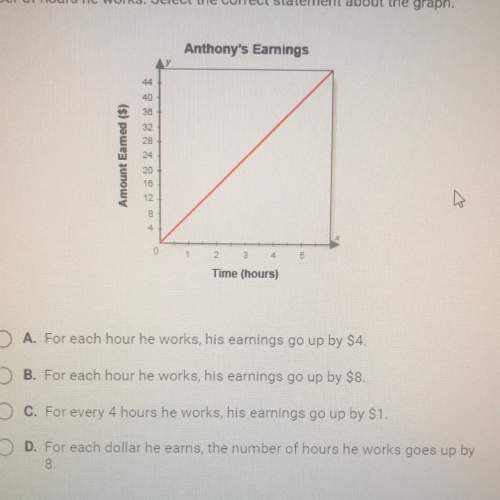
Mathematics, 08.12.2020 18:50 michael3677
1. Begin by writing the formula presented in this unit for finding the area of a triangle, using angle C.
2. Using the Pythagorean identity, sin2C + cos2C = 1, solve for sinC.
Note: Use only the positive root.
3. Substitute the expression from step two into the equation in step one.
4. Using the law of cosines (c2 = a2 + b2 - 2abcosC), solve for cosC. (Rewrite the equation so that you have cosC isolated on one side of the equation.)
5. Square both sides of the equation in step four to get an expression for cos2C. Do not expand the numerator of this fraction! Leave it written as a quantity squared.
6. Substitute this expression for cos2C into the equation in step three. Get a common denominator and simplify enough to eliminate the fraction. Do not expand and simplify the numerator!
7. Checkpoint! At this time you should have the following expression:
K = 1/4 (sqr root)4a^2-(a^2 + b^2 + c^2)^2
If you do not have this equation, you may wish to try to find the error in your work above.
8. Using the format for factoring the difference of two squares [a2 - b2 = (a - b)(a + b)], factor the expression under the radical given in step seven. Do not expand quantities.
9. The result for this step in the proof is provided for you below. Your task is to show that this is in fact the result of manipulating the expression in step eight.
Hint: Remove the parentheses only and regroup.
Step nine: 1/4 (sqr root)[c^2 - (a - b)^2][(a + b)^2 - c^2]
10. Using the format for factoring the difference of two squares [a2 - b2 = (a - b)(a + b)], factor the expression under the radical in step nine.
11. You're almost done! The last step is to convert this expression to Heron's formula. You will need to rely on the definition of s to do this step. Here is some help to get you started:
Recall that s = (a + b + c).
Multiply both sides by 2:
2s = a + b + c.
Now, subtract 2c from both sides of this equation:
2s - 2c = a + b + c - 2c
2s - 2c = a + b - c
Note also that 2s - 2c = 2(s - c).
Now use algebra to make the substitutions and show that the expression in step ten is equal to Heron's formula.
12. The abbreviation Q. E.D. is often written at the end of a mathematical proof. Look up its origin and meaning, and write it in the box below. If appropriate, write it at the end of your proof.

Answers: 3
Another question on Mathematics

Mathematics, 21.06.2019 18:00
10 ! a train starts from grand city and travels toward belleville 388 miles away. at the same time, a train starts from belleville and runs at the rate of 47 miles per hour toward grand city. they pass each other 4 hours later. find the rate of the train from grand city.
Answers: 1

Mathematics, 21.06.2019 18:40
Juliana says that she can use the patterns of equivalent ratios in the multiplication table below to write an infinite number of ratios that are equivalent to 6: 10. which statement explains whether juliana is correct? she is correct because she can multiply 6 and 10 by any number to form an equivalent ratio. she is correct because 6: 10 can be written as 1: 2 and there are an infinite number of ratios for 1: 2. she is not correct because the multiplication table does not include multiples of 10. she is not correct because 6: 10 is equivalent to 3: 5 and there are only 9 ratios in the multiplication table that are equivalent to 3: 5.
Answers: 1

Mathematics, 21.06.2019 23:30
Paul can type 60 words per minute and jennifer can type 80 words per minutes.how does paul's typing speed compare to jennifer's
Answers: 1

Mathematics, 22.06.2019 01:50
Our star pitcher, foster enlight, can throw a pitch so fast that it gets to the catcher’s mitt before it leaves foster’s fingers! if the team wins a game then the probability that foster was pitching is 0.8 but only if foster had at least one day’s rest since his last pitching assignment. if foster does not have a day off and the team still wins, the probability that foster was pitching drops by half of what it was on the previous day. if the team wins three games in succession from the toronto tachyons and foster pitched in game #2, what is the probability that he pitched in one or more of the other games? (assume that foster did not pitch on the day before the first game of this three game series.)
Answers: 1
You know the right answer?
1. Begin by writing the formula presented in this unit for finding the area of a triangle, using ang...
Questions





Mathematics, 15.07.2019 09:40


Mathematics, 15.07.2019 09:40

Mathematics, 15.07.2019 09:40


Mathematics, 15.07.2019 09:40

History, 15.07.2019 09:40

Mathematics, 15.07.2019 09:40




Mathematics, 15.07.2019 09:40

Mathematics, 15.07.2019 09:40



History, 15.07.2019 09:40




